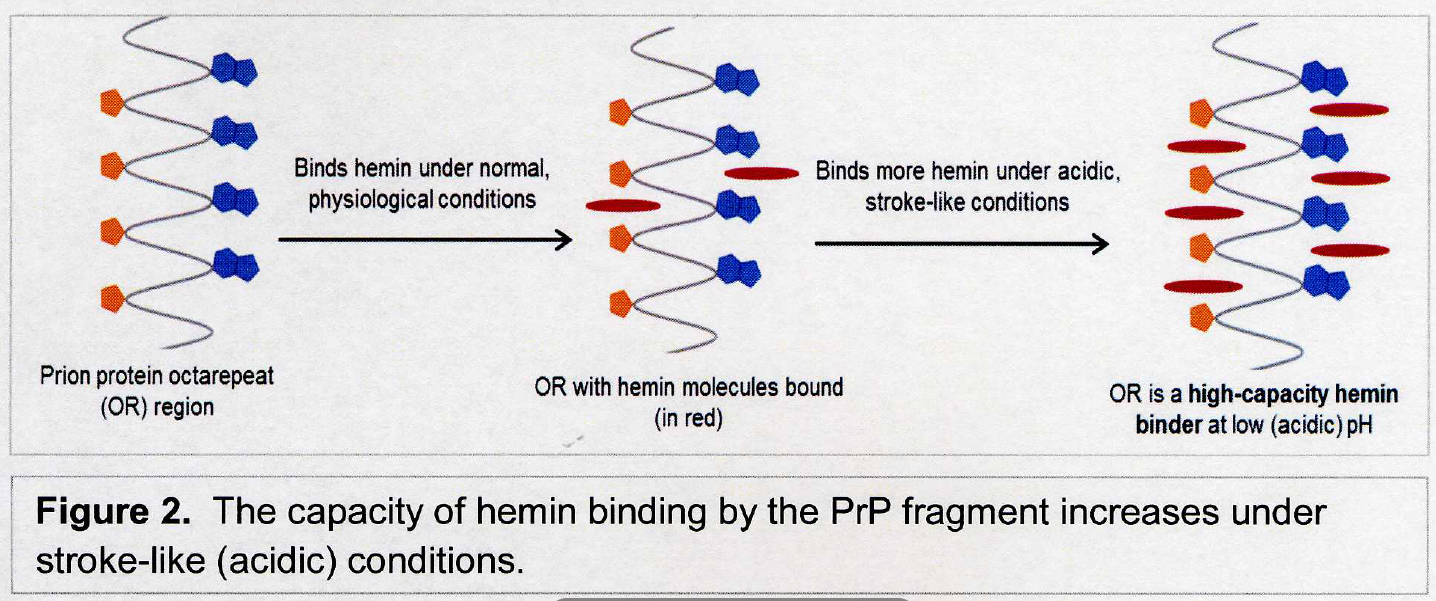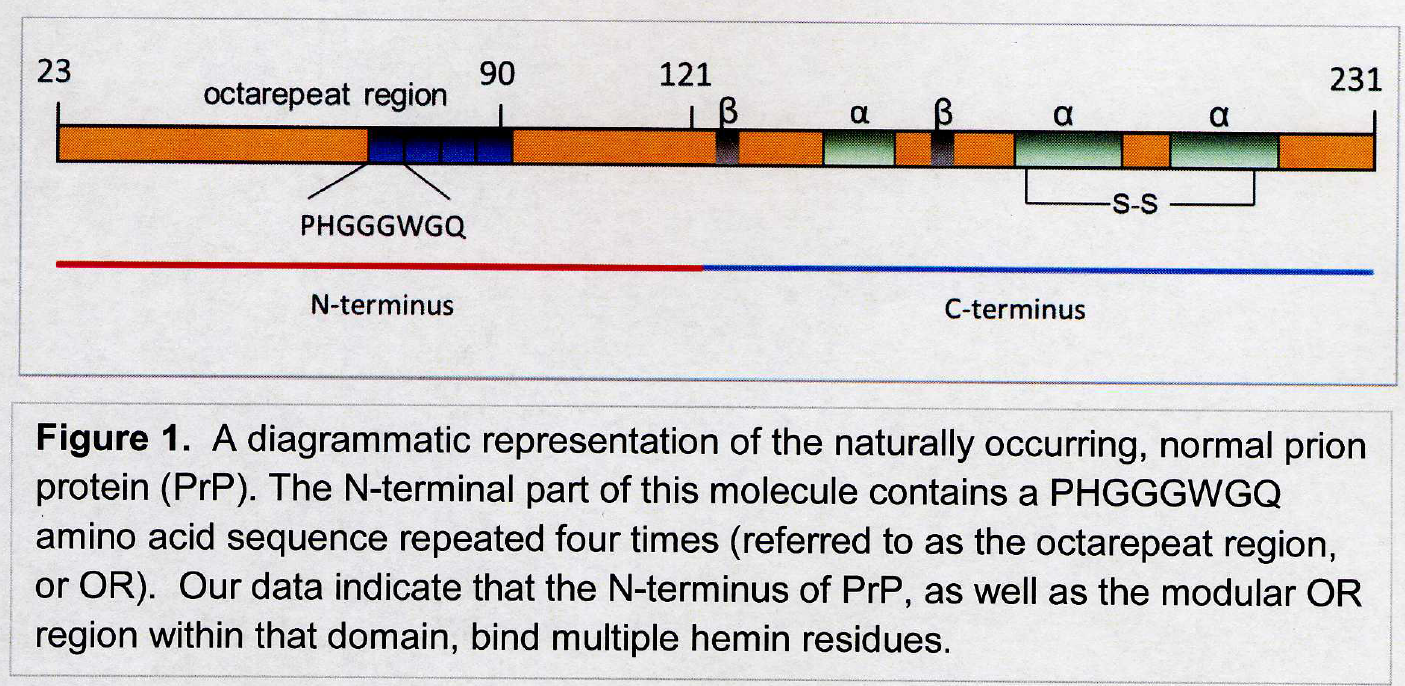Novel Therapeutic Agent Sequestering Toxic Levels of Hemin in Cardiovascular Injury Events
In vascular injury, one of the key damage-inflicting events is the release of toxic levels of free hemin that leads to cell and tissue death. Currently, there is no direct treatment to alleviate hemin toxicity that exacerbates tissue damage during injury events. Our technology offers a solution to this damage with a peptide therapeutic agent that would serve as a high-capacity scavenger of the toxic hemin released during vascular trauma. This technology proposes the use of a peptide to sequester excess hemin and alleviate the extent of injury.
We have shown that peptide fragments derived from the N-terminal domain of the normal, non-pathological prion protein, bind hemin. Each peptide can bind more than one hemin molecule. The hemin binding capacity of these peptides increases in an acidic environment, which is characteristic of vascular injury, including stroke. These findings make the prion protein fragments, or their analogs, strong candidates for a therapeutic agent that would act as a “hemin sponge” sequestering the toxic hemin molecules.
An important aspect of the developed product is that our peptide fragments originate from a naturally occurring protein that is essential in maintaining hemin equilibrium in our bodies, and has been shown to be a part of a cell rescue response in vascular trauma. Delivery of this high-capacity, hemin-sequestering peptide as a therapeutic agent would effectively amount to a boost of the natural defense mechanism against excess of hemin. Overall, this therapeutic agent would diminish the damaging effects of the vascular injury, including stroke, significantly improving patients’ chances for survival and full recovery.



